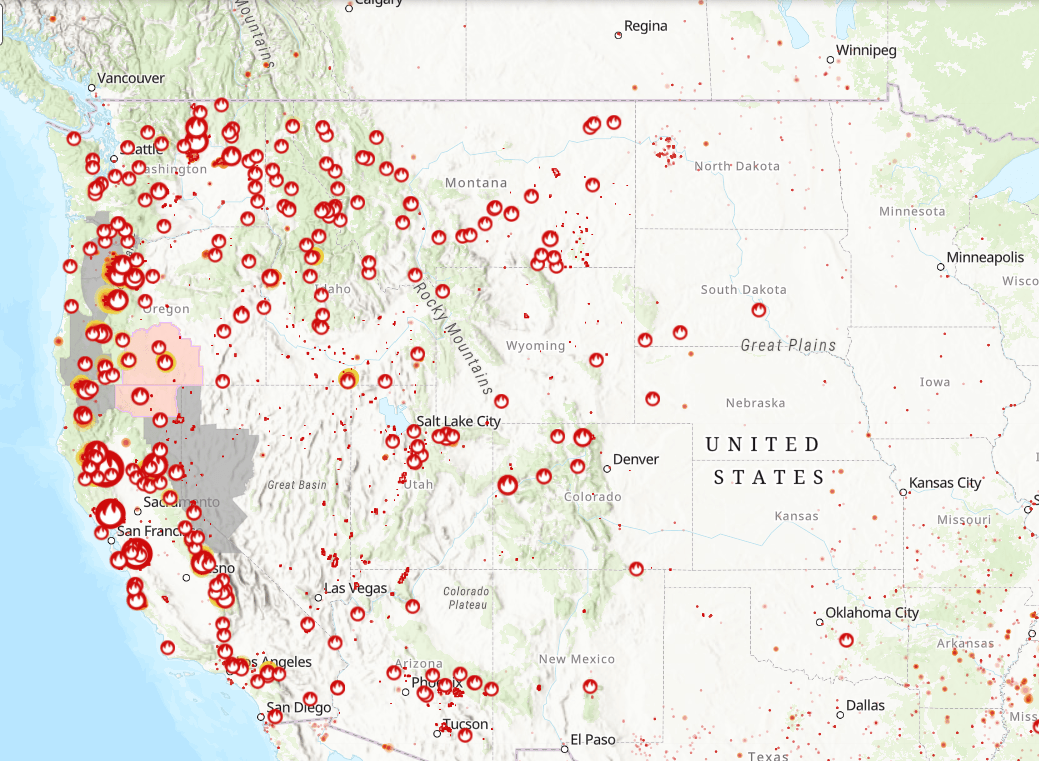Why climate change is producing more frequent thick smoke over Minnesota
Smoke is blotting out sun again Tuesday across Minnesota and the Upper Midwest

The thick elevated smoke layer above Minnesota blotting out the sun again Tuesday is not a random event. The data clearly shows climate change is increasing the number of smoky sky days above Minnesota.
Tuesday’s smoke plumes overhead emanate from more than a hundred wildfires burning in the western U.S. and Canada.

The smoke plumes are clearly visible from space. You can see them fanning out across the U.S. Tuesday on NOAA’s GOES-16 visible satellite loop.

The smoke layer over Minnesota today is nearly as thick as parts of California and the western U.S. NOAA’s HRRR model vertically integrated smoke product shows the plumes streaming across the Upper Midwest Tuesday.
Create a More Connected Minnesota
MPR News is your trusted resource for the news you need. With your support, MPR News brings accessible, courageous journalism and authentic conversation to everyone - free of paywalls and barriers. Your gift makes a difference.

Nearly 5 million acres have burned in the western U.S. so far in 2020. And we’re still in the midst of the western fire season.
Climate change connection
The link between a hotter, drier climate, and increased wildfires in the western U.S. is well documented.
What does the data show? Here’s a clip from a 2016 Climate Central study of western wildfire trends.
Across the Western U.S., the average annual number of large fires (larger than 1,000 acres) burning each year has more than tripled between the 1970s and the 2010s.
The area burned by these fires has shown an even larger increase: in an average year, more than six times as many acres across the West were burned in the 2010s than in the 1970s.
The fire season is 105 days longer than it was in the 1970, and is approaching the point where the notion of a fire season will be made obsolete by the reality of year-round wildfires across the West.
The average number of large fires burning each year on Forest Service land has increased at least 10-fold in the Northern Rocky Mountain states of Wyoming, Idaho, and Montana.
In the Pacific Northwest, there are now five times as many large fires burning in a typical year in Washington as there were in the 1970s; in Oregon there are nearly seven times as many.
Increased smoke days over Minnesota
Have you noticed the increase in smoky sky days above Minnesota in recent years?
A 2018 study in the journal Atmospheric Chemistry and Physics finds nine to 12 days per month between June and September with smoke plumes overhead in the Upper Midwest.

And that smoke is reaching ground-level more often resulting in a doubling of air quality alert days in Minnesota.
According to MPCA’s staff meteorologists we’ve had 26 air-quality alerts since 2015, and 14 of those were due to wildfire smoke. That’s nearly double the number of smoke-related alerts the MPCA called in the previous seven years.
Today’s smoke is aloft over Minnesota and air quality is good at ground-level.
Forest ‘management’ and climate change
Some argue forest management practices are more responsible for bigger western fires than climate change. Here’s the problem with that argument.
Even a poorly managed forest will not exhibit currently observed fire behavior in a cooler wetter climate. It’s hard to burn a cool wet forest, or a forest with green wood and low “fuel aridity.”
World-renowned Texas Tech climate scientist Katharine Hayhoe has a great analogy.
So the evidence is clear. The increasing frequency of smoke plumes we are seeing above Minnesota in recent years is a result of climate change-driven wildfires.